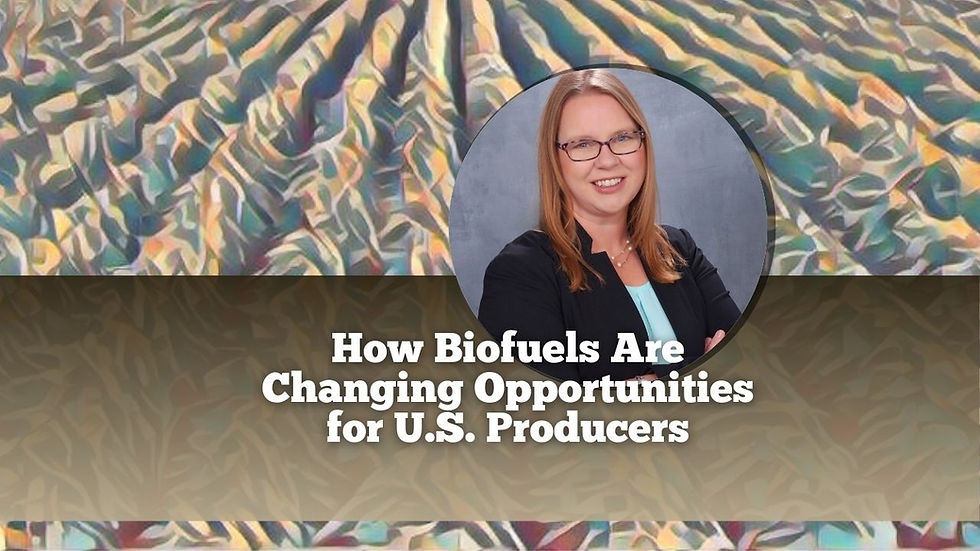Iowa Nitrogen Initiative to bring more precision to fertilizer rates
- Chrissy Wozniak
- Nov 2, 2023
- 3 min read
AMES, Iowa (AgPR) | When Michael Castellano tells people there are billions of different variations of farmer decisions and environmental conditions that can affect how much nitrogen fertilizer is just enough for a plot of corn, he’s occasionally chided for embellishing. Really? Billions?
“They’ll say, ‘Mike we get that it’s complex. You don’t need to exaggerate.’ But I’m not exaggerating. When you do the math, it’s literally billions of possible combinations of hybrid varieties, management practices, weather and other variables,” said Castellano, the William T. Frankenberger Professor of Soil Science and an Iowa State University professor of agronomy.
That uncertainty has big economic and environmental implications. Applying too little nitrogen hurts yields. Applying too much hurts profits because nitrogen is typically the most expensive input for corn production. Excess nitrogen in fields also contributes to water and air pollution.
Despite incentives to use just the right amount of nitrogen fertilizer on corn fields, current official recommendations are broad and ideal rates can vary widely from field to field and year to year. A research team led by Castellano and his ISU colleague Sotirios Archontoulis, Pioneer Hi-Bred Agronomy Professor, is collecting data from trials across Iowa – mostly in fields of participating volunteer farmers – to build models that offer far more granular guidance.
“This project is an investment that will help keep Iowa the best place in the world to grow corn and soybeans,” Castellano said.
The Iowa Nitrogen Initiative is supported with annual funding from the Iowa Department of Agriculture and Land Stewardship. Iowa Secretary of Agriculture Mike Naig said the nitrogen initiative is a strong collaboration between Iowa farmers and ISU experts.
“Farmers depend on the best science when making decisions about crop production, including nutrient management, crop inputs and conservation practices,” Naig said. “This important work will lead to data and tools that farmers will utilize to optimize nutrient management, boost profitability and protect our natural resources.”
Closing the gap
The Iowa Nitrogen Initiative is running 270 on-farm trials this year across 72 different private farming operations. That’s a 400% increase in trials from the project’s first year in 2022. The ultimate goal is 500 trials per year.
To participate, farmers need access to two increasingly common precision ag technologies: variable rate fertilizer application and GPS-based yield monitoring. Using historical yield data to choose spots expected to behave differently, project partner Premier Crop Systems designs a trial in a small area of a field, usually about five acres. Sections within the trial area are assigned varying nitrogen rates, from none up to 200 pounds per acre, and farmers provide the yield data to the research team after harvest. Participants are compensated for the loss of yield on land that receives no nitrogen.
Trial data is enriched with simulations from biophysical process models to calculate optimal rates based on soil and seed types, management practices and weather. That database will be the engine behind the project’s public-facing decision-making tools, which are expected to be ready to use for the 2025 growing season.
The tools will be especially valuable for farmers using the precision ag technology needed to collect the data. Farmers who have the equipment for applying fertilizer at a variable rate often have insufficient evidence-based direction on how those rates should vary, Castellano said.
“We’re trying to close the gap between the precision ag advances made by engineers and the scientific understanding of agronomists,” he said.






Comments